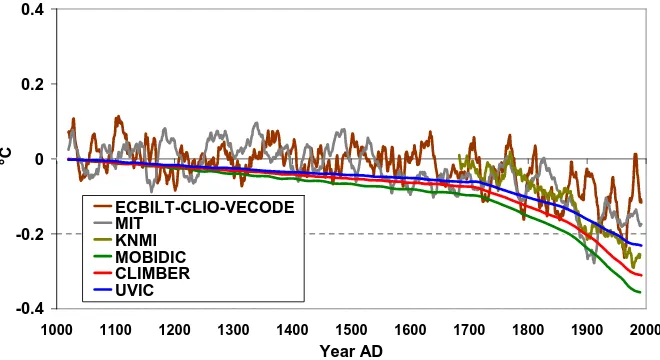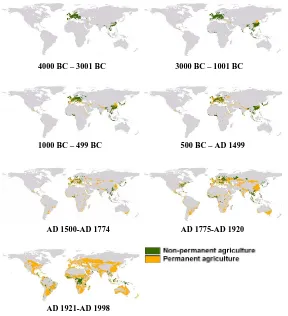Holocene land-cover reconstructions for studies on land cover-climate feedbacks
Full text
Figure



![Fig. 4. Anthropogenic land use in Europe and surrounding areas at AD 800 simulated by four different modelling approaches:Environment] database version 3.1 (Klein Goldewijk et al., 2010);Kaplan et al](https://thumb-us.123doks.com/thumbv2/123dok_us/52003.1505497/6.595.142.456.60.400/anthropogenic-surrounding-simulated-different-modelling-approaches-environment-goldewijk.webp)
Related documents
Sensitivity of the hydrologic indicators to changes in land-cover types between Land 2000 and the three hypothetical levels of Land 2030 as well as to climate change scenarios
Chapter 2 - Presents the algorithms already being used in Land Cover Classification with comparison between them with the scenarios where they are applied; also a comparison
Moreover, field observation was made to confirm the classified images with the land use types on the ground and finally six major land use/land cover types
The study has shown the major land use/land cover types in Lake Baringo cat- chment such as water bodies, settlement, range-land, vegetation, farmland and bare land. The assessment
Understanding responses by changes in land use and land cover (LULC) and climate over the past decades on streamflow in the upper Blue Nile River basin is impor- tant for
A set of three scenarios was designed to quantify hydrological responses to independent and combined effects of climate change (18 % increase in precipitation), and land cover
A set of three scenarios was designed to quantify hydrological responses to independent and combined effects of climate change (18 % increase in precipitation), and land cover
Many studies on land cover and land use mapping have demonstrated that including textural variables may provide additional information to the classification process and improve





